|
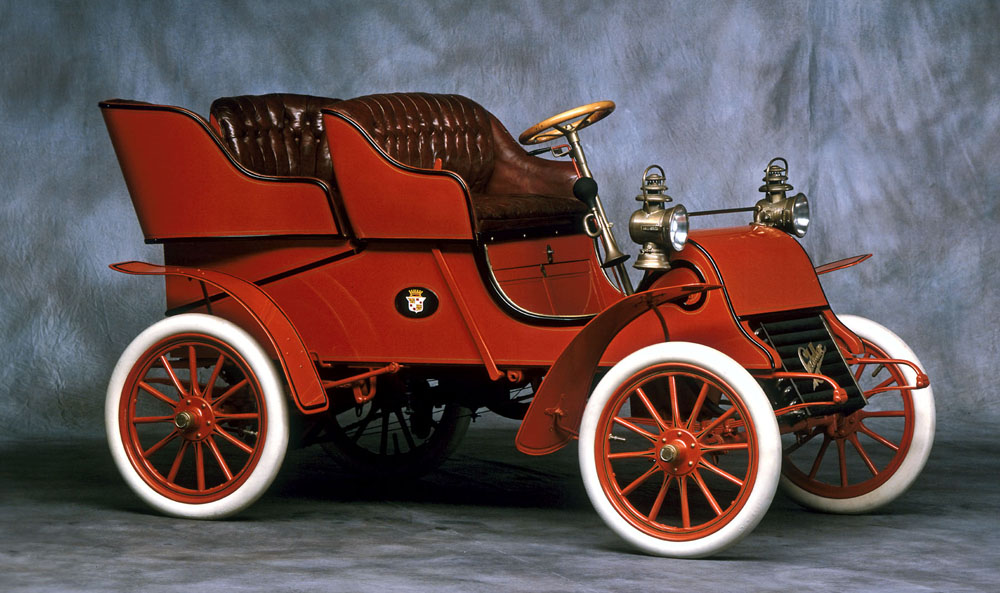
1903-1929 Cadillac
1903 Model A Runabout, First Cadillac
The first Cadillac, the single-cylinder 2-seater 1902 Cadillac runabout. It became known as the "Model A" only in 1903, to distinguish it from the 1904
"Model B", newly available that year. The photo below shows the first Cadillac runabout prototype driven by A.P. Brush; W.C. Leland (in seat); E.E.
Sweet and Walter Phipps (back of rear left wheel); and Frank Johnson (fourth from left without hat).
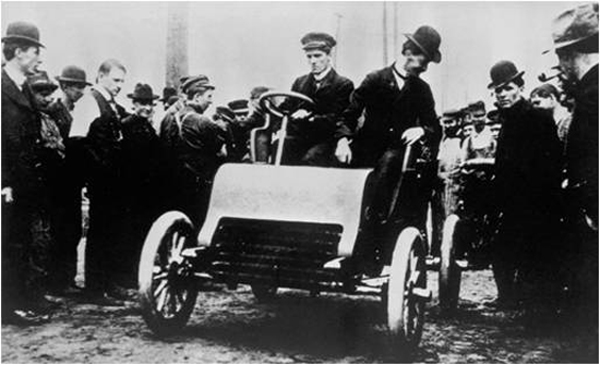
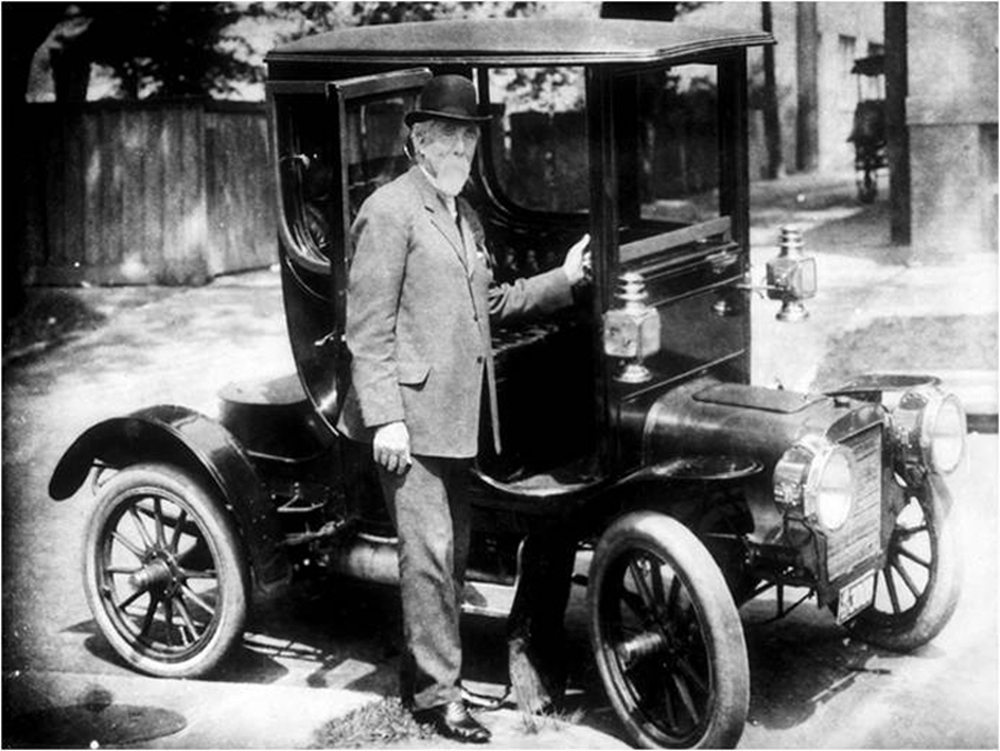
Cadillac founder Henry Leland with his personal car, which was named after Seminole Indian Chief Osceola
1905, Cadillac Closes the Body
One of precision manufacturer Henry Leland's favorite cars was the one-cylinder, two-passenger Osceola, the industry's first car with a completely
closed body. The Osceola's body was built under supervision of Fred J. Fisher, who later co-founded Fisher Body, which in turn became the body assembly division for General Motors in North America.
This early custom job, mounted in late 1905 on the single-cylinder chassis for 1906, was commissioned from Seavers and Erdman, coach builders in
Detroit, for the personal use of Henry M. Leland in 1902. It was designed to his own exacting specifications and named "Osceola", after a respected
chief of the Seminole native American people. The little enclosed 2-seater coupe was top-heavy (it was 5" taller than it was long) and Leland, who
drove his cars as hard as he did his employees, is known to have occasionally flipped Osceola on its side, at speed. Originally painted green, it was
later repainted dark blue; Osceola is/was on display in the Historical Collection of GM's Cadillac Motor Car Division.
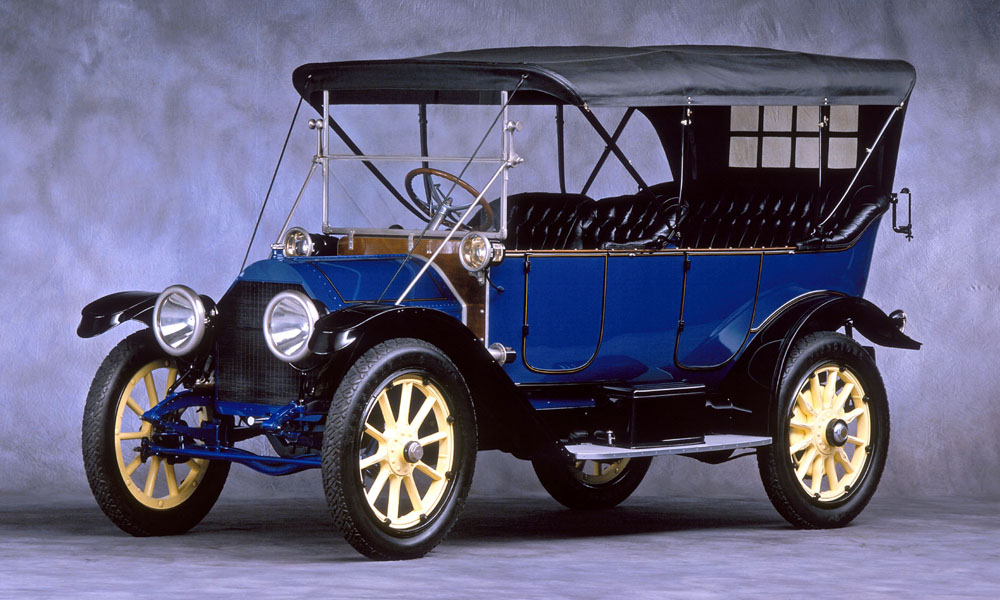
1909 Cadillac Model 30
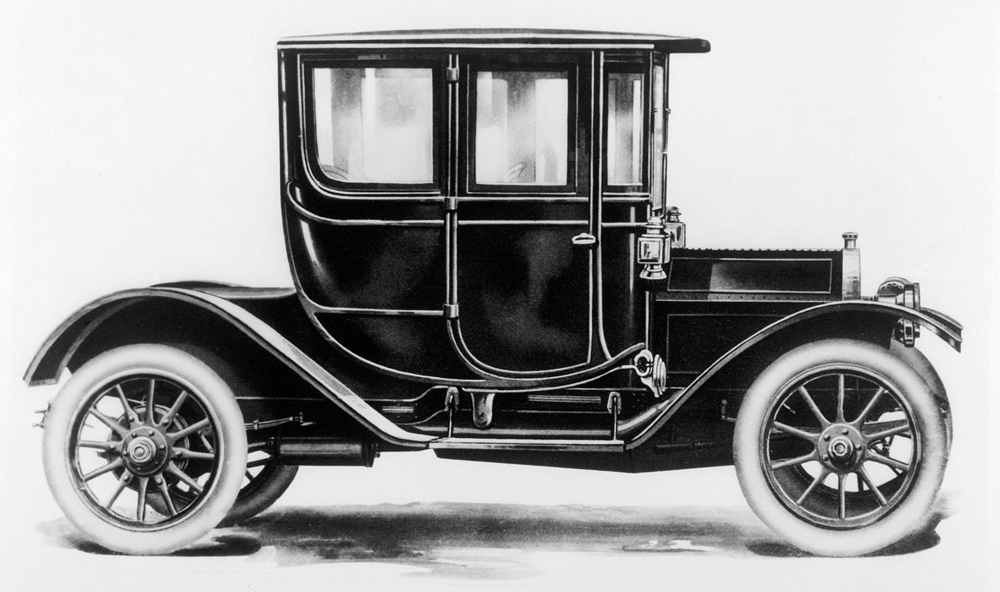
1910 Cadillac Model 30
1910, Cadillac Makes the Closed Body Standard
Cadillac made the closed body design standard on all coupes, further enhancing its reputation for prestige and luxury and setting another industry
milestone by allowing driver and passengers to drive in all kinds of weather and road conditions without having to worry about dust, mud, snow, or rain covering their clothes.
1910 Cadillac Model 30
Once you're in your car, you don't give any thought to being hit by mud or stones flying up from the road — even if you're in a roadster. But before
the coupe and limousine versions of the Cadillac Model 30 made their debut, most cars on the road had neither a windshield nor even a canvas roof.
This car's closed body was a quantum leap in reducing the discomfort and danger of driving through mud, snow, rain, or dust. Within 10 years, closed
bodies were available on virtually all cars and trucks. The 1910 Cadillac Model 30 closed body coupe featured a 4-cylinder engine and delivered 30
horsepower at a price of $1,600. Like most cars of the day, it also came with side oil lamps, a set of tools, a tire repair kit, and one tail lamp.
The 4-cylinder Model H coupe of 1906 was the first fully-enclosed production Cadillac; it cost $3000, excluding the optional brass lamps. The first
fully-enclosed Cadillac built in any numbers was the single-cylinder Model M coupe of 1907; it was derived directly from "Osceola", the prototype
commissioned by Henry Leland, for himself, just over a year earlier; Model M bodies were built by Seavers and Erdman of Detroit. These enclosed cars
soon gained popularity; in 1908, the Model T coupe cost $1350. In 1911, a luxurious, 4-cylinder enclosed coupe became availble at a cost of $2250.
The following year (1912), Cadillac offered the first fully enclosed limousine, costing $3250; it was characterised by rich trimmings and deep, soft upholstery equal to none.
1912 Cadillac: Featuring the Electric Self-starter
- 1912, Kettering's Self-Starter Becomes a Cadillac Standard. With the self-starter creating new demand, Cadillac Motor made it standard equipment on all models and the rest of the industry soon followed suit
Today, no one gives second thought to how their car starts — turn the key and you're ready to roll. But such a simple and safe process wasn't even
a dream in the industry's early days, when starting the car's engine was one of the most difficult and dangerous tasks the average driver performed.
It all changed with the electric self-starter, invented by Charles "Boss" Kettering at his Dayton Engineering Laboratories Company (DELCO) in 1911.
Introduced for the first time on all 7 of Cadillac's 1912 model, it eliminated the cumbersome and dangerous hand-crank and made driving safer, more
convenient, and appealing to a broad range of new consumers (including women). In short, it revolutionized the automobile. By 1916, the electric
self-starter was featured on 98 percent of all cars built in America. The Cadillac sales brochure for the 1912 model year mentioned that there were
now 50,000 Cadillacs on the road throughout the world. The self-starter-equipped 1912 Cadillac lineup won Cadillac its second Dewar Trophy,
awarded by the Royal Automobile Club of London, England, for the most important automotive contribution of the year. Kettering went on to sell
DELCO to GM founder Billy Durant in 1916 and to join GM in 1918, when DELCO became part of GM.
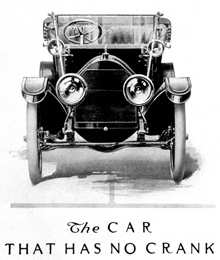
1912 Cadillac Two-Passenger Roadster advertisement, First electric start, "the car with no crank"
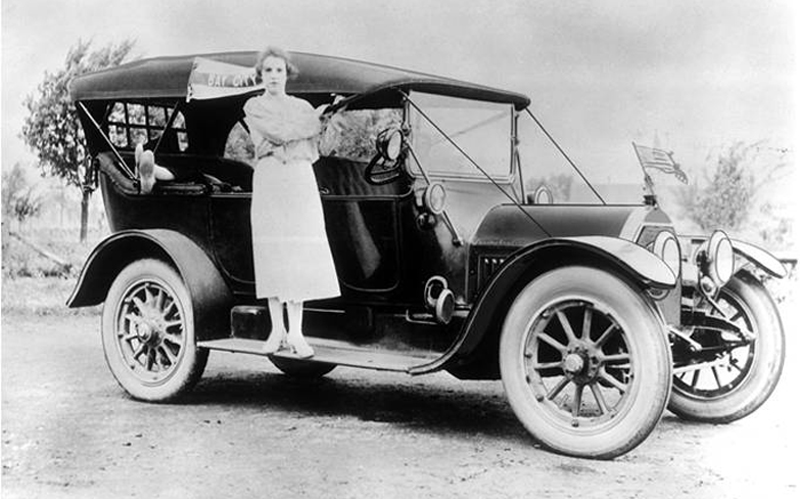
1913 Cadillac Touring Car with Women standing on running board
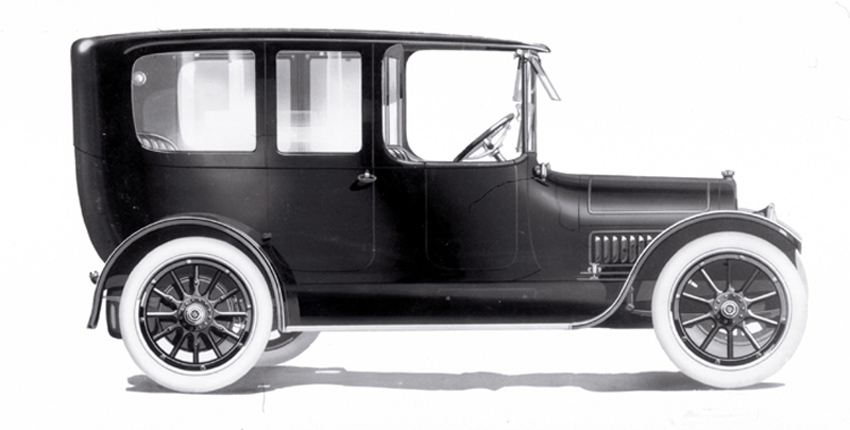
1915 Cadillac Type 51 Limousine for seven passengers
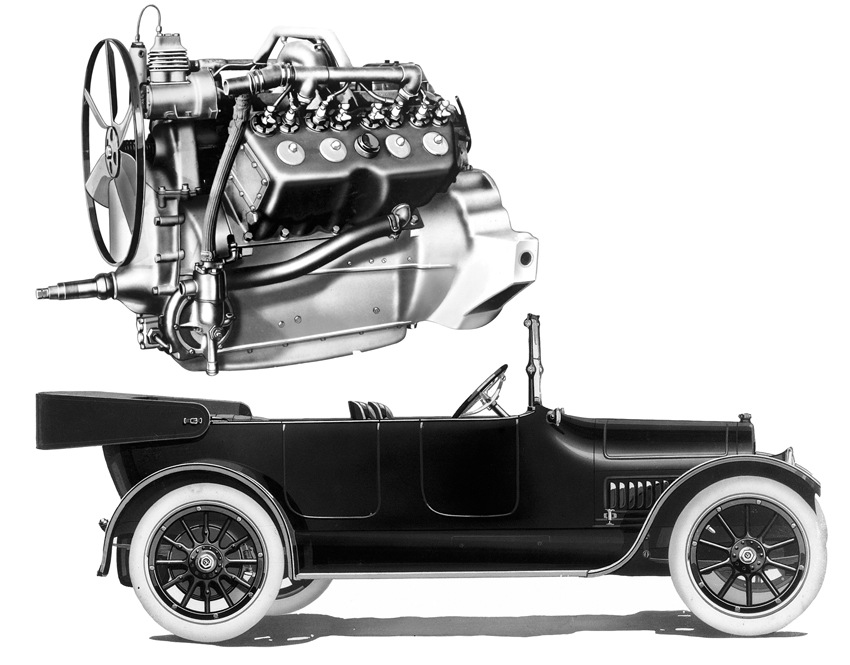
1915 Type 51 Landaulet Coupe, First V-8 engine
In 1914, Cadillac became the first manufacturer to mass produce V-8-powered automobiles. The compact design of the Cadillac V-8 enabled the
overall frame length to be shortened by 10 or more inches, making the car more sturdy and easier to handle. Cadillac raised the bar for performance
with the industry's first V-type, water-cooled eight-cylinder engine. This 314 cubic inch engine produced 70 horsepower at 2,400 RPM and was the
industry's first major step in development of high-speed, high-compression engines. The following year, it was made standard on all Cadillac models
Another Safety Innovation from Cadillac, Cadillac's introduction of tilt-beam headlights, operated by a handle on the dash, was a major advance in
night-time visibility and, like the self-starter, set the standard for others to follow
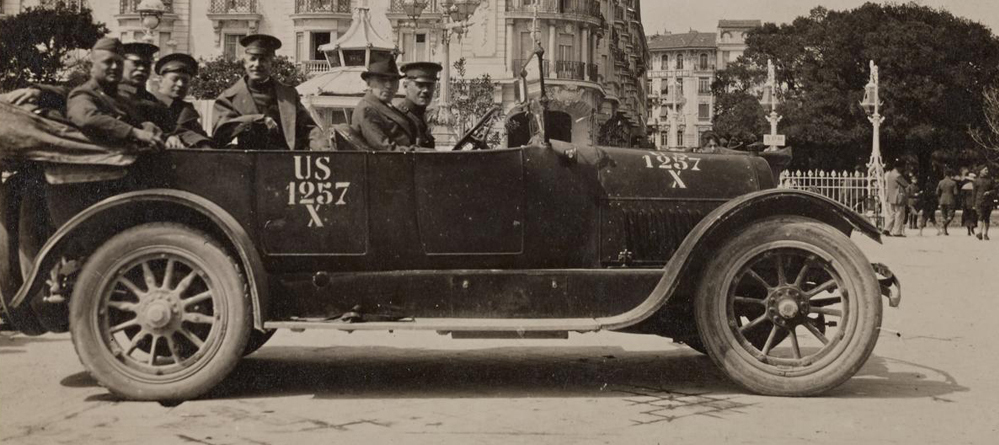
1918 Cadillac Type 57
In 1917, Cadillac participated in a U.S. Army, 2,000-mile competitive endurance run in Marfa, Texas. From its performance, the V-8-powered Cadillac
was selected as the "standard seven-passenger car of the U.S. Army." The Story of Cadillac Type 57 – U.S. 1257X
1924 Cadillac V-63 Touring. The V8 engine in the V-63 produced 83hp. The base price for this vehicle was $3,085
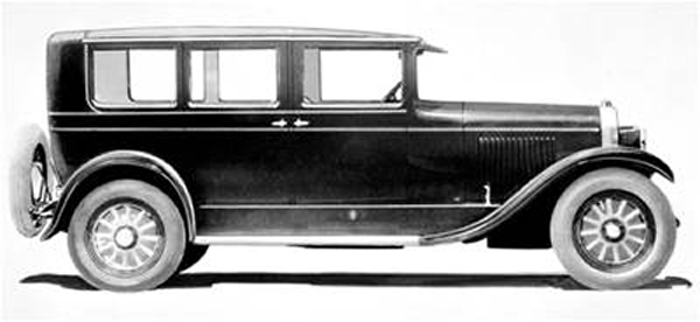
1926 Cadillac Series 314 Standard Four-Door
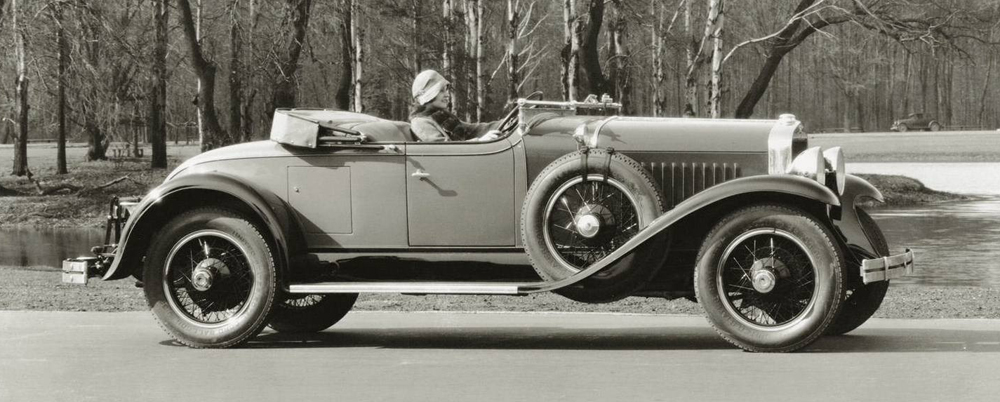
Cars with style and elegance, Cadillac production exceeded 20,000 in 1922. Part of that sales success came from the introduction of the Type 61
that came equipped with a standard windshield wiper and rear view mirror. A new era in automobile design was beginning in the Roaring Twenties with
the influence of Harley Earl, who established the first styling department by an automobile manufacturer, the General Motors Art and Colour Section, in 1927.
Former General Motors Director of Styling David Holls said, "Before 1927, Cadillac was a good, solid, substantial car. After 1927, the cars had style and elegance."
Earl began his work at Cadillac by designing the smaller, very stylish LaSalle in 1927. Created to fill the gap between Buick and Cadillac in the General
Motors lineup, the LaSalle was advertised as a "Companion Car to Cadillac." LaSalle was always considered to be a sportier, more maneuverable Cadillac, similar to the modern Cadillac Catera.
Cadillac LaSalle was the pace car at the 1927 Indianapolis 500. This was the first time a Caddy would pace the race, but certainly not the last.
Cadillacs or LaSalles would be the pacesetters five more times, in 1931 (Cadillac Model 370 V12), 1934 (LaSalle), 1937 (LaSalle), 1973 (Eldorado), and 1992 (Allante).
In its initial year, LaSalle offered eleven body styles on two wheelbases, plus four Fleetwood designs on a 125-inch wheelbase. LaSalle coupes even
had a door on the side that opened to provide a compartment for golf bags. Another Cadillac innovation was the first clashless synchromesh
transmission in 1929. Now drivers didn't have to double clutch their cars to avoid grinding gears.
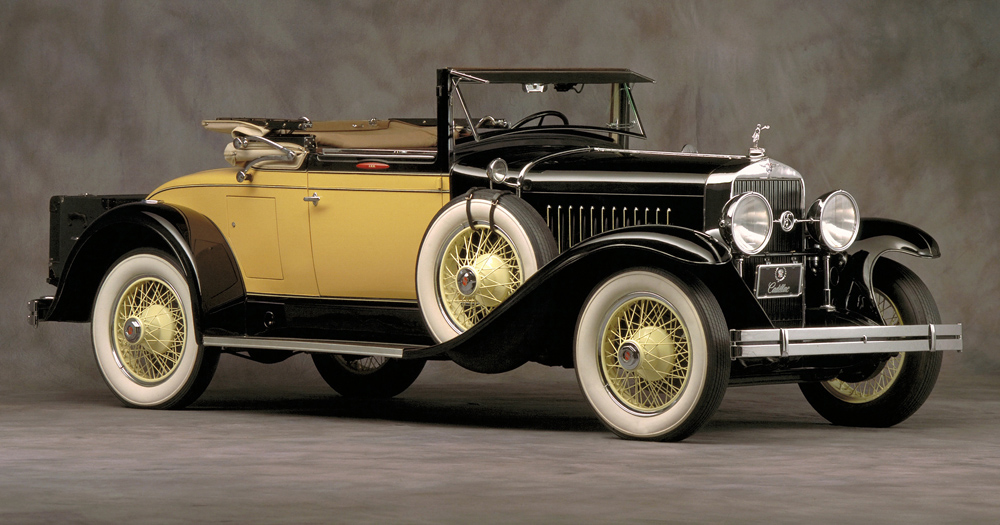
1927 Cadillac LaSalle
1927 LaSalle: The First Production Car Designed by a Professional Designer
Automotive design today is both an art and science, but it was just an afterthought until GM decided to take a gamble on a new approach. Harley
Earl, universally considered the father of automotive design, was customizing cars for Hollywood stars when GM asked him to design a new production
car to be called LaSalle: the first time any automaker had turned to a professional designer (rather than in-house draftsmen and engineers) to design
a vehicle from the ground-up. With its low profile and curved lines that flowed from front to rear, the LaSalle immediately stood out from other
production cars. In 1927, Earl joined GM full-time and created the industry's first in-house design studio, then called the GM Art and Colour Section,
where he was in charge of design of all GM vehicles. The 1927 LaSalle featured a V-8 engine, had a top speed of 95 miles per hour, and was priced
between $2,495 to $2,685. The LaSalle line of cars was built and marketed by Cadillac until 1940.
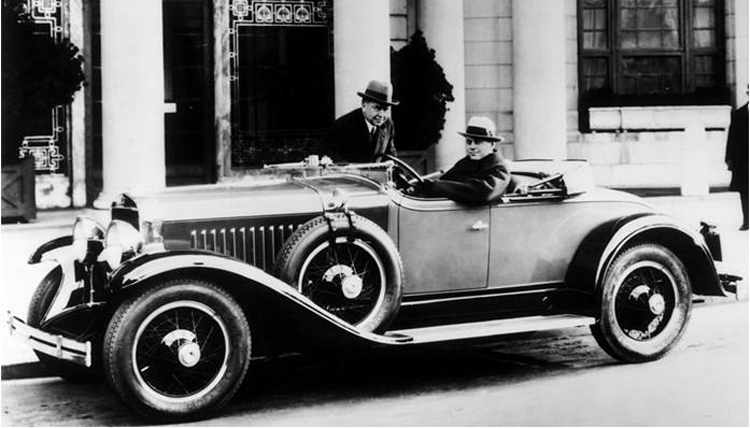
Harley Earl is shown at the wheel of a 1927 LaSalle Series 303 Roadster, with Cadillac chief Larry Fisher
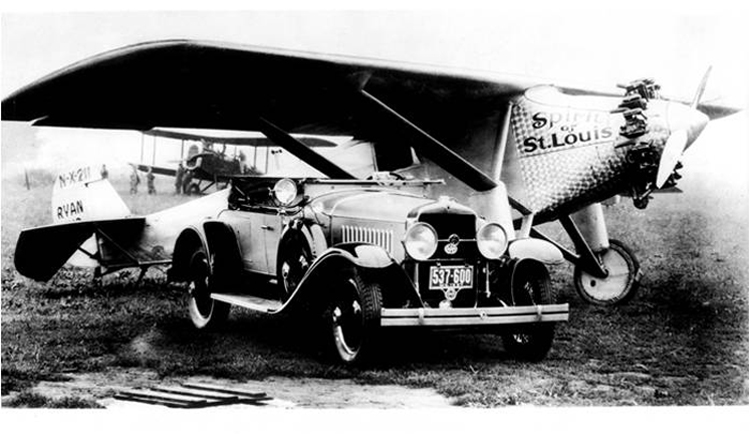
1927 LaSalle Roadster with Charles Lindberg's Spirit of St. Louis
1928, Cadillac Introduces the Synchromesh Transmission
Cadillac's "clashless" syncromesh transmission was the biggest advance to date in eliminating the chafing noise and friction of shifting gears and laid
the foundation for the fully automatic transmission.
1928, Safety Glass
GM introduced shatter-proof safety glass in all windows of its 1929 model year Cadillac and LaSalle models and soon made it standard on all GM vehicles.
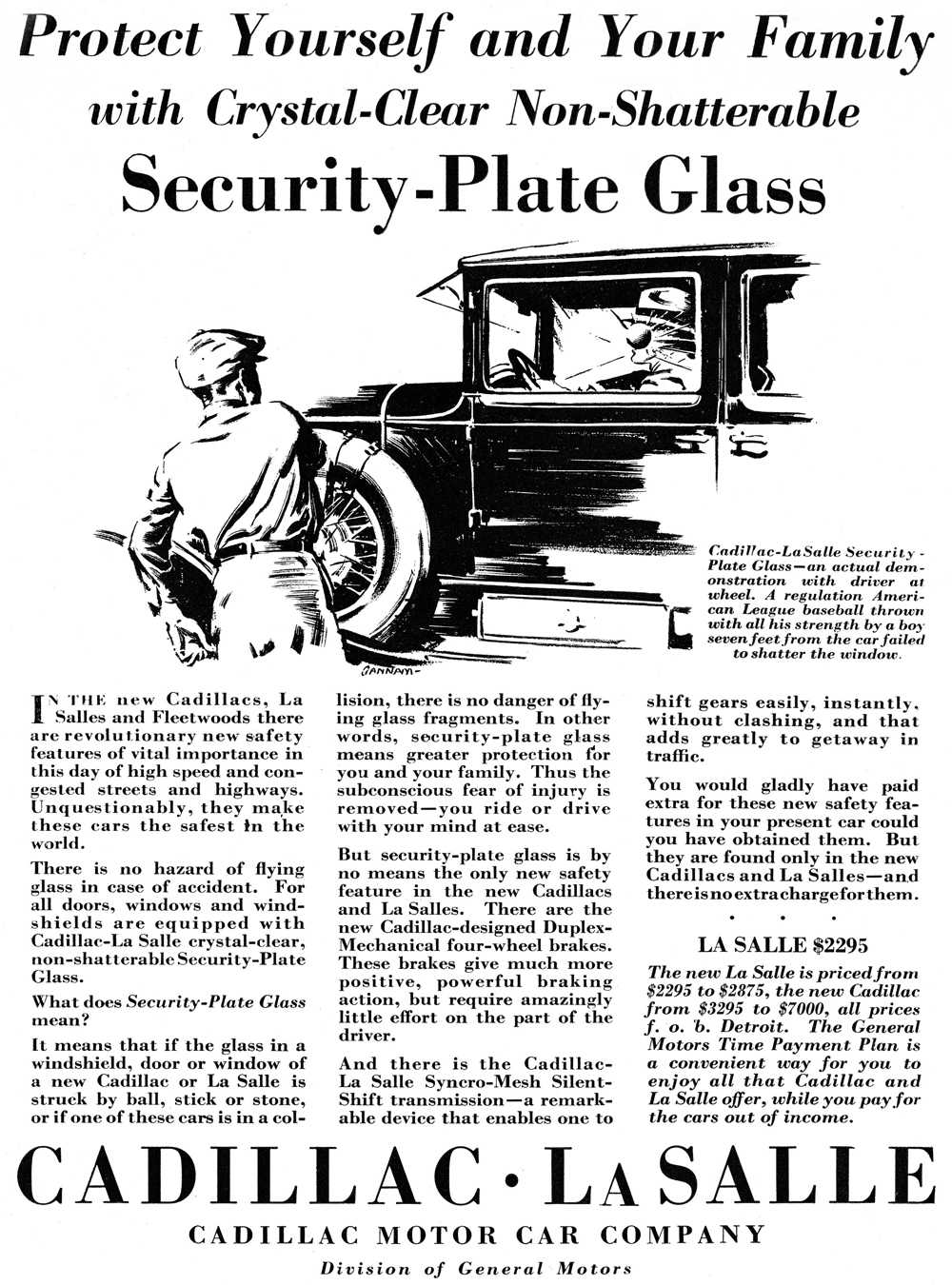
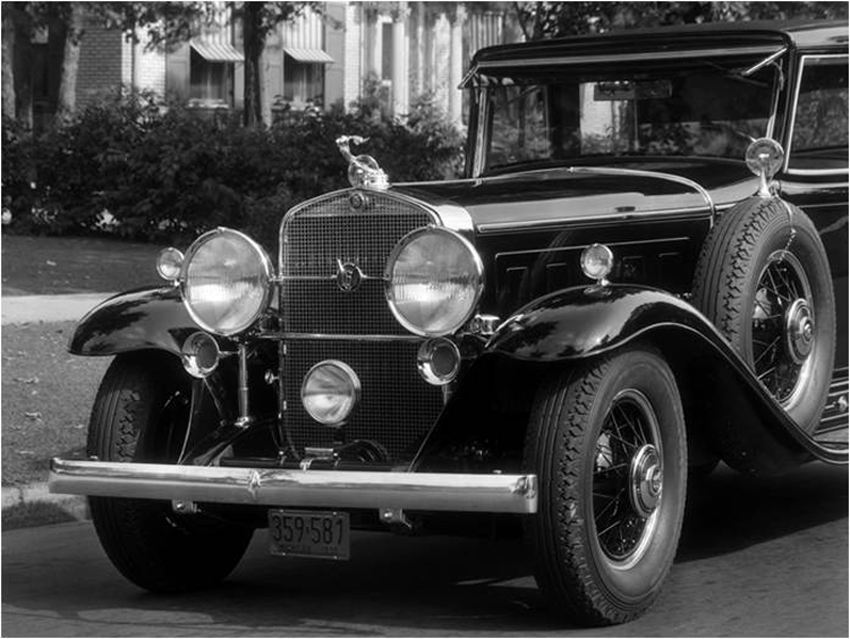
1929, Adding the Chrome
Further enhancing its status and image of prestige and luxury, Cadillac was the first brand to make chrome plating a standard feature on bumpers and
other exterior features in all its models
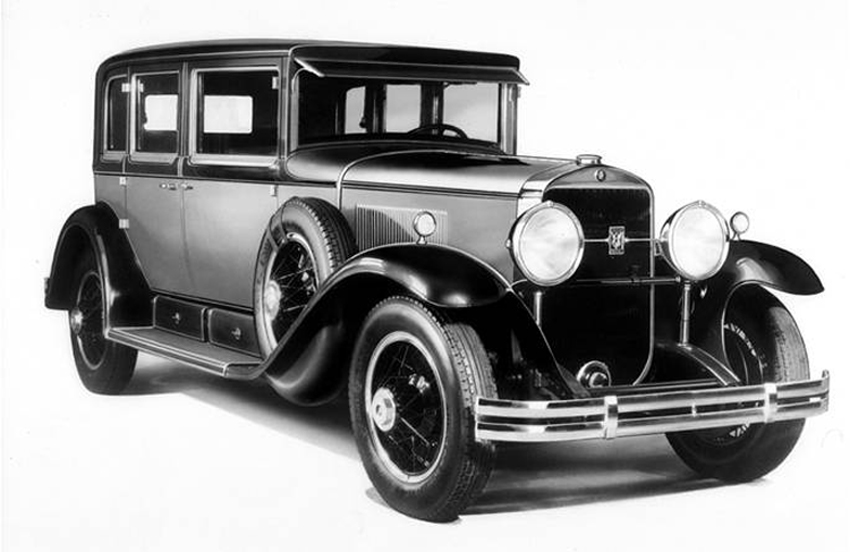
1929 Cadillac Series 341 B Sedan
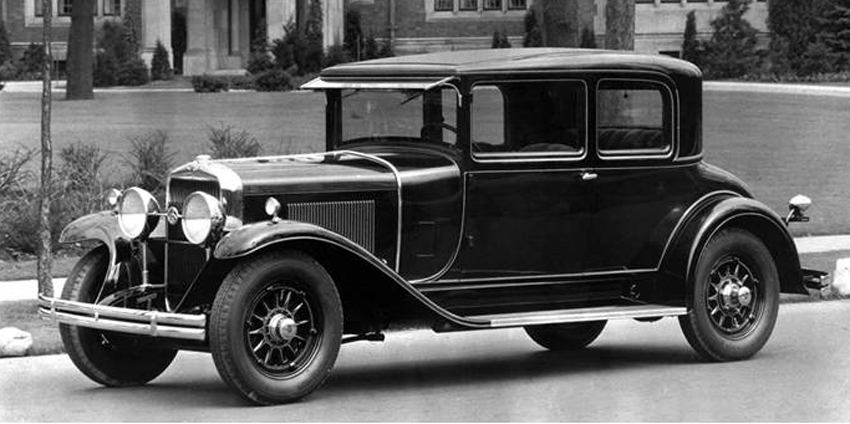
1929 LaSalle Series 328 5-Passenger Coupe
|


















